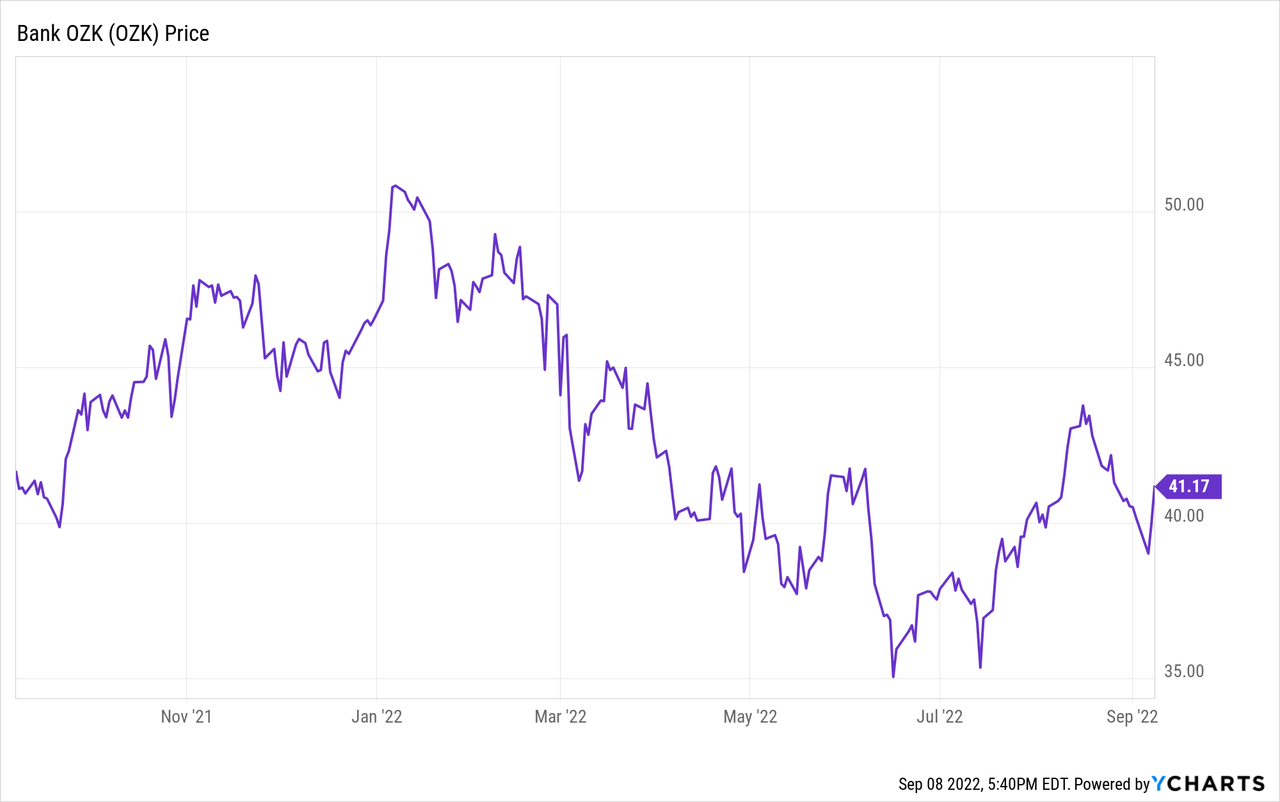[ad_1]
Bank OZK
Introduction
Back in May, I thought the preferred shares of Bank OZK (NASDAQ:OZK) were too cheap to ignore as the preferred dividend yield had increased to approximately 6.4%. At the current share price of $17.55 for the preferred shares, trading with (NASDAQ:OZKAP) as ticker symbol, the yield is approximately 6.6%. In this article, I will mainly focus on the sustainability of the preferred dividend yield and I would recommend you to read some of my older articles to get a better understanding of the bank’s business model.
The bank performed well in the second quarter
Although I’m mainly interested in the bank’s preferred shares as I only own those fixed-income securities, it is obviously important to check up on how the business is doing as ultimately, the bank needs to be able to afford the preferred dividends. The increasing interest rates should help the bank to expand its net interest margin, but we also shouldn’t forget inflation and an economic slowdown could weigh on the performance of the loan book, with more loans entering the ‘past due’ stage.
Fortunately, the bank reported a very solid result in the second quarter as its interest income increased to $281.5M while the interest expenses came in at just $15.7M. This resulted in a net interest income of just over $265M, which is an increase versus the $250M in the first quarter of this year and the $241M in Q2 last year.
Bank OZK Investor Relations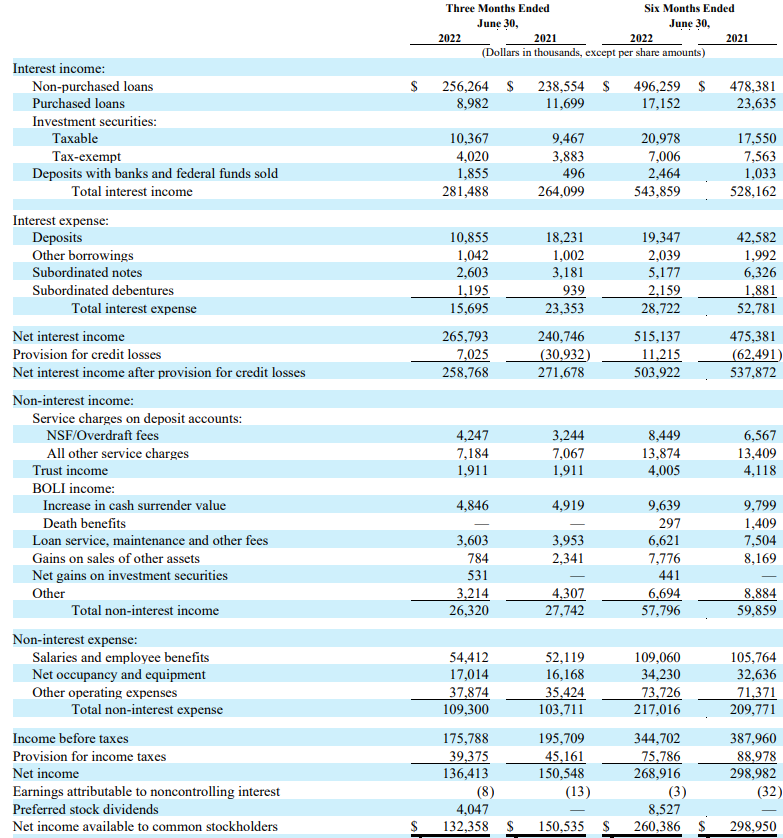
The net interest income remains very important for Bank OZK as the bank doesn’t generate a lot of revenue from its non-interest activities. As you can see above, Bank OZK only reported $26.3M in non-interest income for the quarter while the total non-interest expenses came in at $109M for a net non-interest expense of $83M.
This resulted in a pre-tax and pre-loan loss provision income of approximately $183M and as the bank recorded just over $7M in provisions for credit losses, the reported pre-tax income was just under $176M resulting in a net income of $136.4M. We still need to deduct the preferred stock dividends which totalled just over $4M, resulting in a net income of $132.4M attributable to the common shareholders.
This already is a good first step for the preferred shares as the preferred dividends require less than 3% of the earnings to be fully covered. Or in other words, the preferred dividend coverage level exceeds 3,000%.
And looking at the liabilities side of the balance sheet, it looks like we shouldn’t be too worried about the asset coverage level either. The bank has 14 million preferred shares outstanding for a total of $350M. This means that of the $4.6B in equity, approximately $4.25B ranks junior to these preferred shares. Or if we look at it from the opposite point of view, the asset coverage level is in excess of 1,300%.
Bank OZK Investor Relations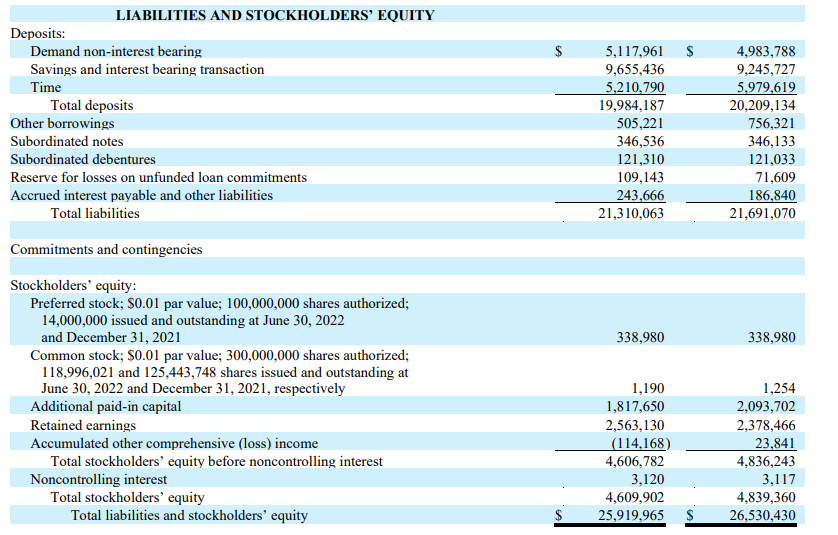
There’s one caveat though, the balance sheet of Bank OZK contains just over $666M in goodwill and intangible assets, but even if you would exclude these from the equation, the asset coverage ratio remains very robust.
The loan book remains strong
The combination of a very strong preferred dividend coverage ratio and a strong asset coverage ratio is good news for the preferred shares. But the asset coverage ratio also requires a strong loan book. If suddenly half of the loan book defaults on loans, then even the preferred shares will be facing tough times as Bank OZK would have to scramble to protect its equity cushion.
Fortunately, Bank OZK is running a solid balance sheet. Of the $26B in assets, almost $5B is held in cash and investment securities, so the liquidity level is pretty good. I’m mainly interested in the $18.55B loan book and particularly in the relatively low amount of loan loss allowances.
Bank OZK Investor Relations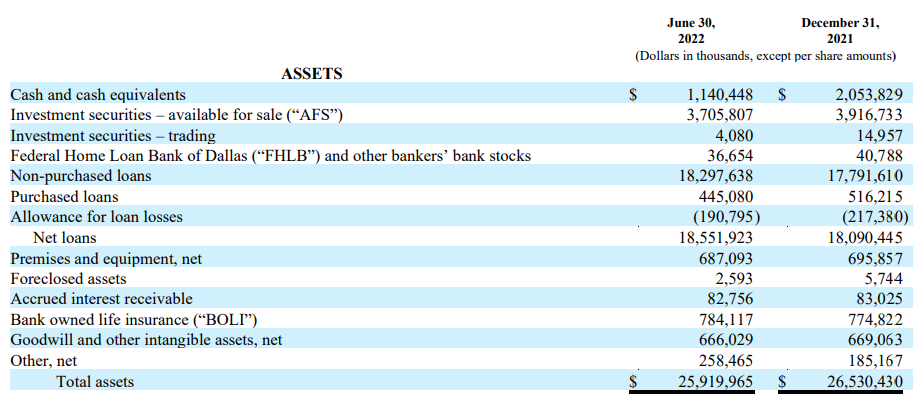
Looking at the breakdown of the loan book, it’s clear the non-farm and non-residential as well as the construction and development loans represent almost two-thirds of the loan book. Fortunately, the vast majority of these loans is qualified as ‘pass’ with just under $160M of the loans classified as ‘special mention’ or ‘substandard’.
Bank OZK Investor Relations
Even more important than the classification, there is the low amount of loans past due. As you can see below, just over $22.5M of the $18.7B loan book was classified as past due, and that’s a pretty strong performance and a decrease compared to almost $31.5M as of the end of 2021.
Bank OZK Investor Relations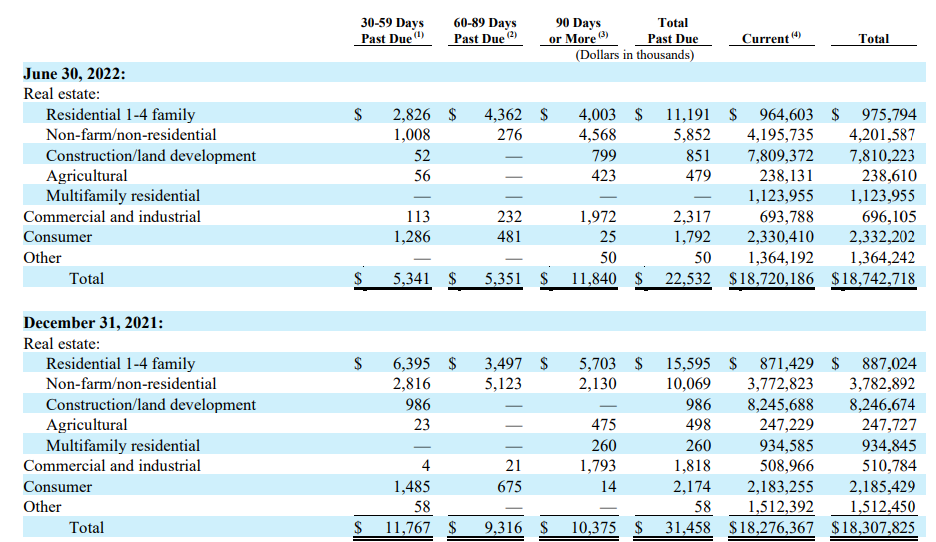
An additional $36M of the loans is currently classified as ‘non-accrual’ but that also is a decrease compared to the $44.3M as of the end of last year. And with an average loan-to-value ratio of 64% in the Real Estate Specialties Group, Bank OZK should be able to avoid substantial haircuts on its loan book, even on the loans that are now classified as non-performing. This means Bank OZK should continue its strong history of being one of the banks with the lowest charge-off ratios in the USA.
Bank OZK Investor Relations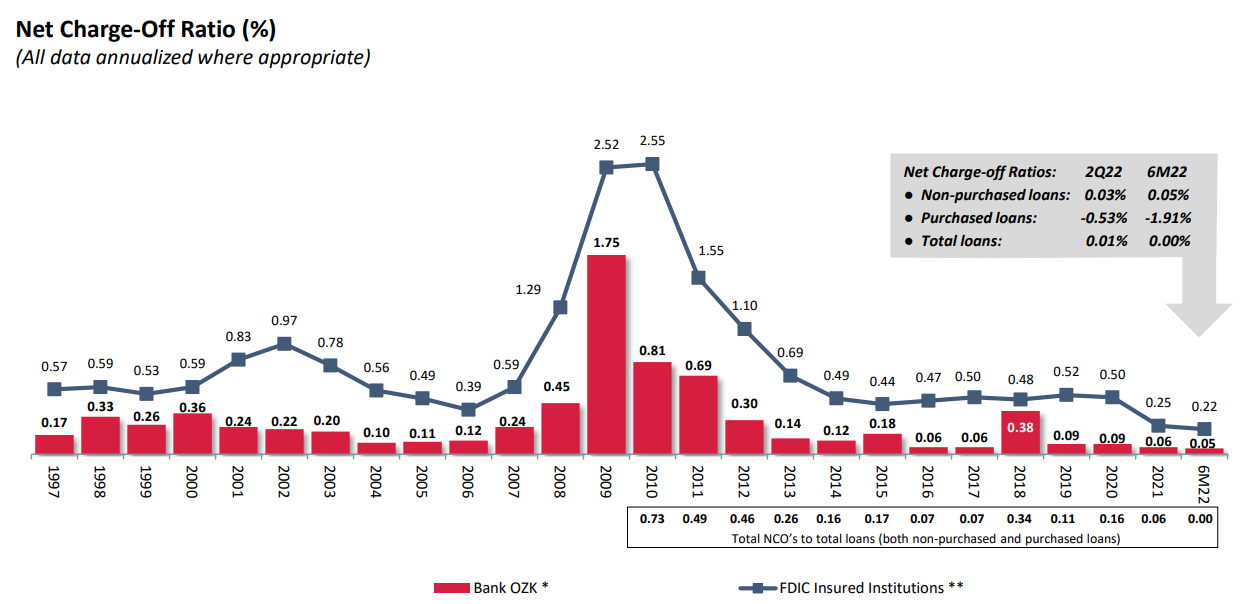
Investment thesis
The increasing net interest margin could boost the earnings profile of the bank, but perhaps Bank OZK will also have to increase its loan loss provisions as I can imagine the current inflationary environment puts some of the borrowers in a tough position. From an investment perspective, I continue to hold the preferred shares in Bank OZK, and given the strong preferred dividend coverage ratio and asset coverage ratio, I’m more than happy to maintain my position and I wouldn’t mind adding to this position on further weakness.
[ad_2]
Image and article originally from seekingalpha.com. Read the original article here.


